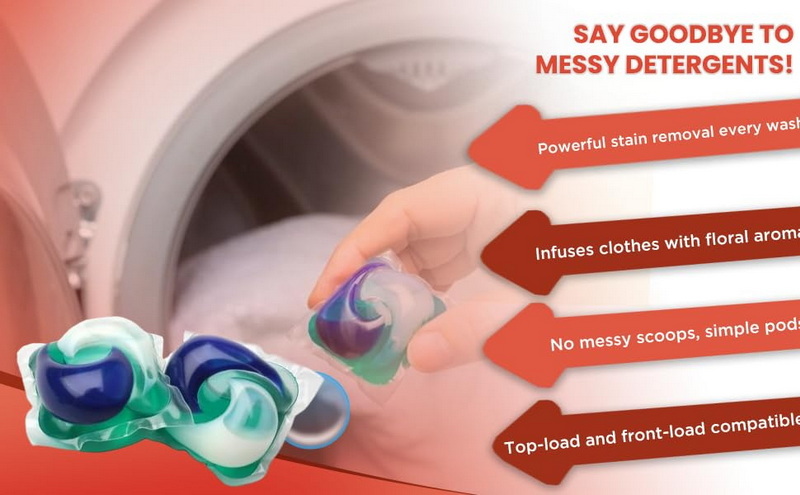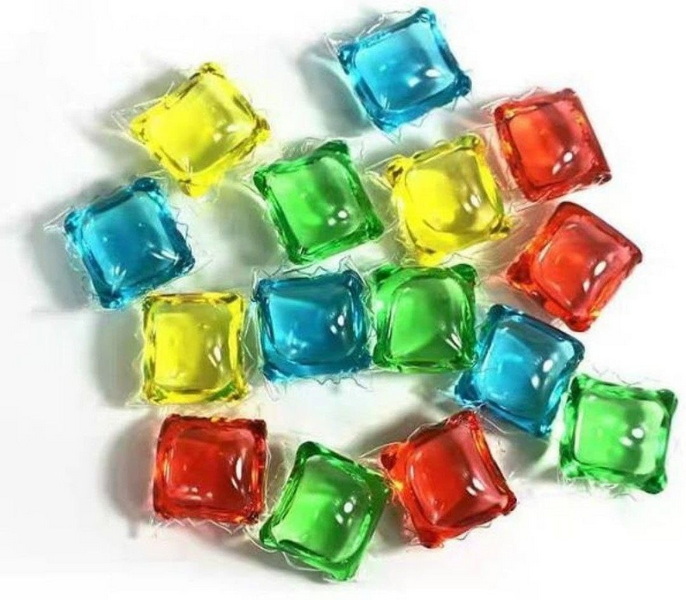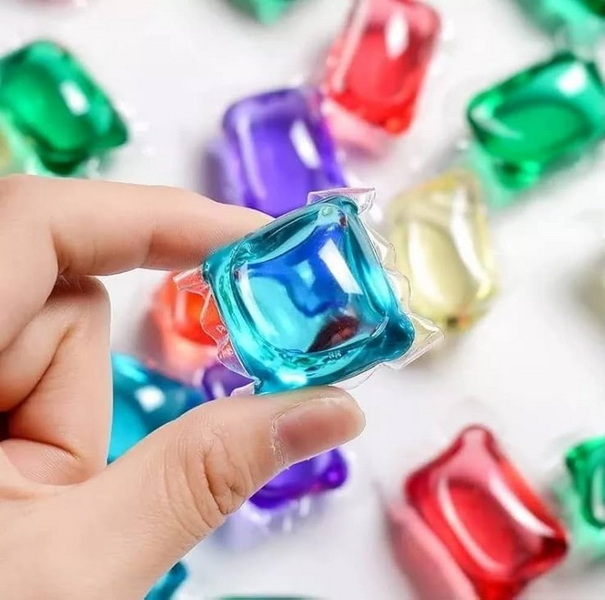Dongguan UFine Daily Chemical Co.,Ltd.
- All
- Product Name
- Product Keyword
- Product Model
- Product Summary
- Product Description
- Multi Field Search
Views: 222 Author: Tomorrow Publish Time: 10-27-2025 Origin: Site











Content Menu
● What Are Laundry Pods and How Do They Work?
● Common Causes of Undissolved Pods
● Best Practices to Ensure Complete Dissolution
● Maintenance and Machine Care
● Safety and Environmental Considerations
● Choosing the Right Product for Your Needs
● Integration with Water Conditions
● Advanced Tips for Commercial and High-Volume Use
● User Education and Safety Practices
● FAQ
>> Q1. What should I do if a pod remains undissolved in my washing machine?
>> Q2. Can hard water cause pods to fail to dissolve?
>> Q3. Are there specific pods for high-efficiency machines?
>> Q4. Is it safe to pre-dissolve a pod before adding it to the wash?
>> Q5. How can I diagnose a faulty washing machine causing undissolved pods?
Undissolved laundry pods can disrupt laundry routines, waste money, and leave residues on fabrics. Understanding why pods sometimes fail to dissolve and how to prevent these issues is essential for achieving consistently clean results. This article dives deeper into the dissolution process, practical adjustments to washing practices, machine maintenance considerations, and safe handling. It also covers overlooked factors such as detergent chemistry, load distribution, and cycle customization that influence pod performance.

Laundry pods are pre-measured capsules containing concentrated cleaning agents encased in a dissolvable film. When introduced to water, the shell ruptures, releasing the detergents, enzymes, and additives contained within. The dissolution process depends on water ingress, shear forces from agitation, temperature, and time. Pods are designed for convenience and portion control, reducing the guesswork involved in measuring liquids or powders.
Key dissolution mechanics:
- Water penetration: The outer film must absorb water to soften and rupture.
- Mechanical agitation: Agitation helps break the capsule and disperse its contents evenly.
- Temperature: Warmer water generally accelerates dissolution by increasing molecular mobility.
- Time: Sufficient wash duration is needed for full dissolution and distribution.
Undissolved pods arise from a combination of factors. Recognizing these can prevent recurrence.
- Inadequate water level or short cycles that do not allow full dissolution.
- Very cold water temperatures hindering dissolution reactions.
- Overloaded machines restricting water flow and agitation efficiency.
- Hard water causing mineral deposits that impede capsule rupture.
- Pod formulation mismatches, such as thicker shells or incompatible product lines.
- Malfunctioning machines with poor agitation, clogged dispensers, or aging seals.
- Pod placement that places capsules on top of clothing rather than into the wash stream.
When you encounter undissolved pods, perform a quick diagnostic:
- Inspect the pod residue: Determine whether the shell remained intact or partially dissolved.
- Check machine function: Listen for unusual noises, observe poor tumbling, or check for blocked filters.
- Review cycle settings: Confirm temperature, duration, and load size align with pod instructions.
- Consider water hardness: Test your water or obtain local hardness data to guide formulation choices.
Adopt a set of consistent practices to maximize dissolution reliability.
- Follow pod labeling precisely: Use the recommended cycle, temperature, and loading guidelines.
- Avoid overloading: Ensure enough space for water and pods to move freely around clothes.
- Choose appropriate water temperature: When safe for fabrics, warmer water facilitates dissolution.
- Maintain machine health: Regularly inspect agitator, drum, pump, and filters for wear or blockages.
- Use compatible formulations: Pair pods with machine types (HE vs standard) and fabric care needs.
- Consider pre-dissolving for stubborn cases: If permitted by the product instructions, pre-dissolve a pod in hot water before adding to the drum.
- Place pods correctly: Insert directly into the drum or water stream as specified, not on top of clothing.
- Address water hardness: If you have hard water, consider detergent designed for hard water or a home water-softening approach.
Routine maintenance minimizes dissolution problems caused by machine inefficiencies.
- Clean the detergent drawer and dispenser regularly to prevent buildup that impedes dispensing.
- Run regular cleaning cycles or use machine-specific cleaning tablets to clear residue.
- Inspect hoses, pumps, and valves for signs of wear or leaks that could affect water delivery.
- Check seals and gaskets for leaks that might alter fill levels and agitation.
- Schedule professional service if the machine exhibits persistent performance issues.

Practical scenarios help translate theory into action.
- Scenario A: Cold, short wash on a full load yields an undissolved pod.
Solution: Switch to a longer cycle with a warmer temperature, and ensure the pod sits in the drum prior to loading.
- Scenario B: Overloaded drum with insufficient agitation.
Solution: Remove items to restore proper motion and dissolution time.
- Scenario C: Inconsistent results across cycles on an older machine.
Solution: Consider servicing the drive motor, pump, or control board; inspect for worn components.
- Scenario D: Hard water contributing to incomplete dissolution.
Solution: Use a detergent formulated for hard water or install a home water-softening solution.
- Scenario E: Suspected defective pod.
Solution: Test with a different batch or brand; contact the manufacturer if persistent.
Protective and responsible handling matters with pods.
- Do not puncture, crush, or cut pods; exposed contents can be hazardous.
- Store pods in a cool, dry place away from children and pets to prevent accidental exposure.
- Follow product label directions for safety and first aid in case of accidental contact.
- Dispose of unused or damaged pods according to local regulations to minimize environmental impact.
Consider these criteria when selecting pods.
- Load type and fabric care: Regulars, delicates, and heavy soils may benefit from specific formulations.
- Detergency strength and stain-removing capabilities suited to your common loads.
- Machine compatibility: Front-load vs top-load, HE compatibility, and recommended water conditions.
Water chemistry can significantly influence dissolution behavior.
- pH levels can affect surfactant performance and capsule rupture dynamics.
- Mineral content, especially calcium and magnesium, can alter soap micelle formation and dissolution timing.
- In calcareous regions, using a water-softening cartridge or choosing hard-water-optimized pods helps maintain performance.
Beyond household use, commercial or high-volume settings face stricter constraints.
- Bulk purchasing: Ensure consistent pod formulations across batches to avoid variability.
- Cycle scheduling: Implement longer cycles and higher rinse counts when appropriate to ensure complete dissolution in large loads.
- Monitoring and logs: Maintain usage logs and failure rates to identify patterns and adjust product choice or machine maintenance.
Educate household members about pod use and safety.
- Explain the importance of not placing pods on clothing.
- Teach the correct placement method and cycle settings to reduce errors.
- Emphasize keeping pods away from children and pets and using a locked cabinet if necessary.
Undissolved laundry pods result from an interplay of wash parameters, water conditions, pod design, and machine health. By aligning cycle settings with pod recommendations, avoiding overloading, placing pods correctly, and maintaining washing machines, you can achieve reliable dissolution and consistent cleaning outcomes. Continuous assessment of water hardness, load types, and detergent compatibility further enhances performance. Regular maintenance and mindful product selection are essential to minimize failures and maximize laundry efficiency over time.

A1. Switch to a warmer, longer cycle, ensure the pod is placed in the drum, and verify the machine is not overloaded. If the problem persists, try a different brand or batch to rule out product issues.
A2. Yes, hard water can slow dissolution and leave residues. Consider a detergent formulated for hard water or a water-softening approach.
A3. Yes, many pods are designed for high-efficiency (HE) washers, but always check the label to ensure compatibility with your machine's fill level and agitation method.
A4. Only if the product instructions permit this method. Follow the label guidance, as some pods are designed to be added directly to the drum.
A5. Inspect for poor agitation, faulty pumps, or blocked filters. If issues persist after basic checks, consult a service technician or the manufacturer for diagnostics.